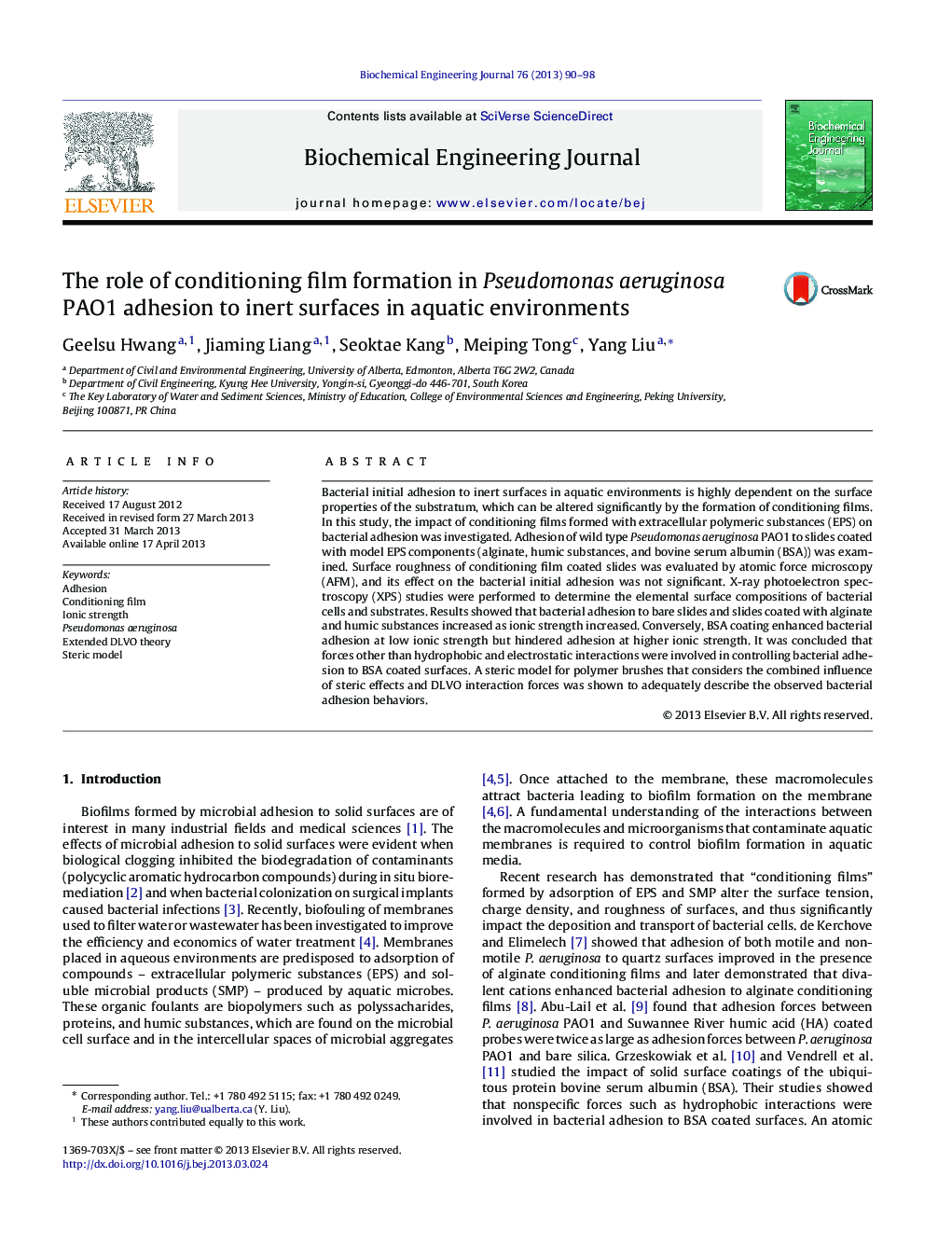| کد مقاله | کد نشریه | سال انتشار | مقاله انگلیسی | نسخه تمام متن |
|---|---|---|---|---|
| 3387 | 167 | 2013 | 9 صفحه PDF | دانلود رایگان |

• Impact of conditioning films on the adhesion of P. aeruginosa to solid surfaces was tested.
• The effect of surface roughness on bacterial initial adhesion was not significant.
• Compared to bare slides, alginate and humic acids coating enhanced bacterial adhesion.
• Conversely, BSA coating hindered bacterial adhesion at high ionic strength.
• A steric model was shown to adequately describe the observed bacterial adhesion behaviors.
Bacterial initial adhesion to inert surfaces in aquatic environments is highly dependent on the surface properties of the substratum, which can be altered significantly by the formation of conditioning films. In this study, the impact of conditioning films formed with extracellular polymeric substances (EPS) on bacterial adhesion was investigated. Adhesion of wild type Pseudomonas aeruginosa PAO1 to slides coated with model EPS components (alginate, humic substances, and bovine serum albumin (BSA)) was examined. Surface roughness of conditioning film coated slides was evaluated by atomic force microscopy (AFM), and its effect on the bacterial initial adhesion was not significant. X-ray photoelectron spectroscopy (XPS) studies were performed to determine the elemental surface compositions of bacterial cells and substrates. Results showed that bacterial adhesion to bare slides and slides coated with alginate and humic substances increased as ionic strength increased. Conversely, BSA coating enhanced bacterial adhesion at low ionic strength but hindered adhesion at higher ionic strength. It was concluded that forces other than hydrophobic and electrostatic interactions were involved in controlling bacterial adhesion to BSA coated surfaces. A steric model for polymer brushes that considers the combined influence of steric effects and DLVO interaction forces was shown to adequately describe the observed bacterial adhesion behaviors.
Figure optionsDownload as PowerPoint slide
Journal: Biochemical Engineering Journal - Volume 76, 15 July 2013, Pages 90–98